PARTNER CONTENT
This content was produced by Automotive Logistics in partnership with Canadian National
Canadian National Railway (CN) has been expanding in recent years, through investing in its infrastructure and network capacity, strengthening cross-border operations and integrating new technologies. Throughout all of this, CN is adapting to electrification and evolving to service EVs while improving sustainability.
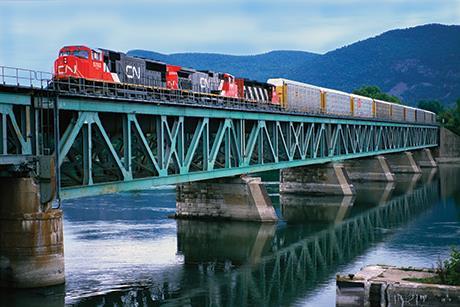
Canadian National (CN) Railway is one of Canada’s largest rail networks and plays a crucial part of the automotive supply chains across Canada, Mexico and the US that drive North America’s economy.
As a Class I railroad, CN operates over 18,000 miles of track in the US and Canada, and accesses Mexico seamlessly through its strategic partnerships with other railways. The railroad has gone from strength to strength, having most recently reported revenues of $4.3 billion in the second quarter (Q2) of this year – an increase of $272m, or 7%. At the time, Tracy Robinson, president and CEO of the company, said the team of railroaders has “continued to deliver outstanding service” to CN’s customers.
Despite this success, the railroad is keen to expand further and improve services even more, with a purpose to power the economy.
Stronger rail is good for everyone
Helen Quirke, vice-president of Supply Chain and Business Development, CN believes “stronger rail is good for everyone”.
In her role, Quirke oversees automotive marketing and sales activities, automotive compound operations, and wider supply chain business across North America including transloads, CN customs brokerage and business development.
“We are highly customer focused and know that we win when our customers are doing well in their markets,” – Helen Quirke, CN
“It’s an exciting portfolio with a lot of growth potential,” she says. “I love the opportunity to sit with customers and figure out how to create a supply chain that works for their business and be able to problem solve.”
Expansion and investment

CN has an expansive footprint stretching from the east coast of Canada to the west coast and down to the Gulf of Mexico. Around 90% of Canada’s population lives less than 100 miles from CN’s track, and in the US the railroad reaches more than 20% of the population in the same distance.
“We go where the consumers are,” Quirke says. “We also have a very strong origin franchise, meaning we access many of the most significant vehicle plants in North America, specifically in Ontario, Michigan and Mississippi, and we access import/export facilities in Halifax and Vancouver, Canada.”
In fact, more than 85% of traffic in North America originates on CN’s network and more than 65% terminates on it, connecting domestic and international markets. Quirke says this is due to its unparalleled logistics solutions with specialised facilities that cater to a diverse range of customers, including major shippers, OEMs and logistics providers.
“CN’s extensive network, strategic location and service capabilities provide a competitive edge over other transportation providers,” Quirke says. “This advantage helps attract and retain a significant portion of North American freight. These factors collectively contribute to CN’s dominance in the North American rail transportation sector.”
Quirke says that the company is focused on efficient, reliable transportation solutions for both finished vehicles and auto parts. “By operating our automotive compounds through our subsidiary, Autoport, we offer customers an integrated service. We are highly customer focused and know that we win when our customers are doing well in their markets.”
Ensuring smooth border crossings
Robotic Process Automation (RPA) is one of the key technologies CN has employed to streamline and expedite border crossing processes.
RPA impacts the network in three major ways:
- Reduced clearance times
- Improved accuracy
- Better efficiency
CN utilises RPA and other advanced technologies to ensure smooth border crossings by automating documentation, integrating real-time data, enhancing communication, improving tracking, and reducing manual errors.
For more about CN’s border security and customs processes, download CN’s brochure or contact their experts here.
CN has continued to invest in infrastructure to enhance its network capacity and efficiency. This includes upgrading rail lines, expanding terminals, upgrading its Autoport facilities, and investing in technology to improve operational performance.
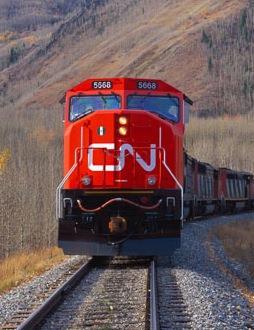
The firm recently opened new storefronts and capacity expansions for the automotive sector, including its auto compound in New Richmond, Wisconsin and its AutoMobile International ro-ro terminal. Quirke says the compound in New Richmond allows for enhanced capacity in the Midwest, a high-traffic corridor, adding higher volume of automotive shipments to the supply chain with improved efficiency, better service levels and advanced tracking and management systems.
Turning southward, CN provides its customers access to the AutoMobile terminal via the terminal railroad. This terminal is designed to handle the loading and unloading of vehicles faster and more efficiently, with specialised equipment and processes.
“We’re very excited to be able to grow our business in the US with new origins and destinations,” Quirke says.
CN’s sustainability initiatives
CN has been focusing on sustainability, aiming to reduce its carbon footprint and improve environmental performance, including adopting more energy-efficient technologies and converting truck to trail movements, as rail is not only more cost effective, but also three to four times more fuel efficient than trucks.
Quirke says the company has invested in technology dedicated to improving fuel efficiency, such as advanced locomotives that employ sophisticated fuel management systems. This includes the deployment of tier-4 locomotives, which are designed to meet stringent environmental standards and significantly lower emissions.
Advanced analytics and real-time data are also used to ensure that train schedules are optimised along a well-maintained, fluid network. These measures continue to be expanded with explorations into renewable energy sources and hybrid fuel locomotives.
On top of this, CN is ensuring that sustainable infrastructure for charging plug-in hybrid and fully electric vehicles is in place, working closely with customers and investing in its compounds to support the transition to EV.
Quirke says CN’s commitment to sustainability and its proactive measures in fuel efficiency and emissions reduction have positioned it as a leader in the rail industry’s efforts to improve environmental performance.
Alice Peres da Silva, director of customs brokerage US and Canada at CN, says that aside from rail being a cost and environmental solution, customs brokerage for rail generally is facilitated shortly after the creation of the rail shipping instructions. “This early start allows us to identify and address issues to minimise, delays in movement, compliance issues and duty and user fees,” she says. ”Unlike other modes of transport, we are not waiting on the carriers to provide import manifest details & shipping documents to begin our work. As a wholly owned subsidiary of the rail, we have unique and deep understanding of the rail operations, which enhances our ability to navigate the customs brokerage process and resolve issues efficiently.”
Integrating technology to improve reliability

CN has been incorporating advanced technologies like data analytics and automation to optimise operations, enhance safety and improve service reliability and customer communication.
The rail firm has partnered with Stanley Robotics to pilot robots to shuttle and park cars in CN’s compounds, improving safety, reducing damages and allowing for more efficient use of space. “We’re pretty excited about these and how they can potentially change the broader vehicle logistics industry,” Quirke says.
Breakthroughs in AI have allowed the company to predict equipment failures before they occur, and digital platforms and enhanced tracking capabilities have improved customer experience by providing better visibility and more accurate information, giving customers a comprehensive view of operations in a user-friendly manner.
Da Silva says that technology has also helped at the border. “We currently utilise automotation for monitoring rail manifest for all importing carriers,” she says. “This allows us to facilitate timely filing in advance of automatically receiving the rail import manifest, speeding up the process and allowing us to divert our team’s attention to other matters.”
While these are just a few of CN’s advancements in technology, they are part of a larger set of improvements that mark a significant step forward in environmental sustainability and safety, allowing CN to improve performance in communities across the network.
CN’s market expansion
Strengthening cross-border operations and exploring new opportunities in various freight segments are strategies CN is using to expand its market.
One such offering is intermodal transportation, which Quirke calls “a cornerstone” of CN’s solutions. Intermodal offerings provide a versatile solution for moving goods efficiently across various modes of transport with access to specialised equipment and dedicated transloading facilities that support large volumes of containers.
For automotive costumers, CN has specialised double stack trains which offer an unparalleled opportunity to optimise rail space and capacity, she says.
“Our container services can be transferred seamlessly between rail, truck, and ship at multiple points across the network, enhancing flexibility,” Quirke adds. “These opportunities combine the strengths of multiple modes of transport, integrating them into both domestic and international supply chains.”
Navigating a changing automotive industry
As the industry continues to evolve in the process of electrification, CN is committed to helping its customers manage the transition.
“The role we play is in helping our customers to think through these supply chain changes,” says Quirke. “We believe that a lot of the materials required for EVs will come from places on our network: raw materials from the mines or battery production facilities. We can help OEMs optimise their logistics for moving components and finished vehicles, reducing transportation costs and emissions.
“Our Autoport facilities are evolving to service EVs and include the charging infrastructure required by OEMs and dealers. We regularly hear from our customers that we’re ahead of the curve in this respect. We are always looking for new ways to innovate and improve, so we are constantly challenging ourselves.”
For more information about CN’s automotive services across North America, visit CN’s website.






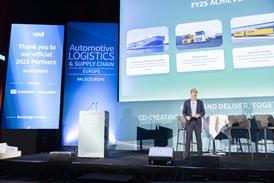


















![Global[1]](https://d3n5uof8vony13.cloudfront.net/Pictures/web/a/d/s/global1_726550.svgz)

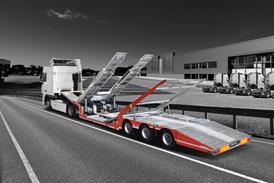
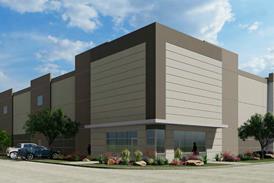

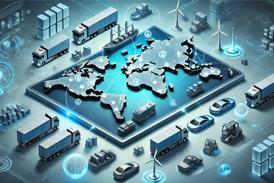




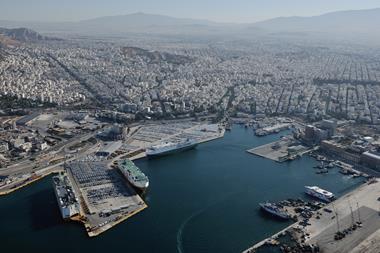
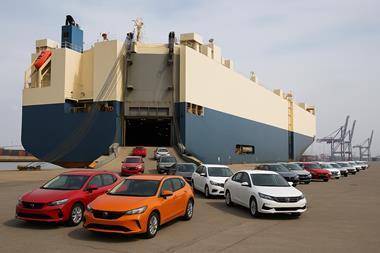
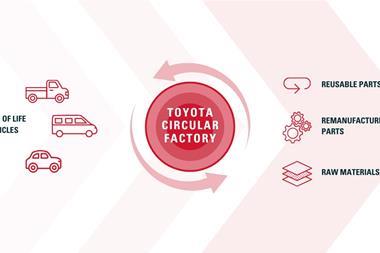



No comments yet